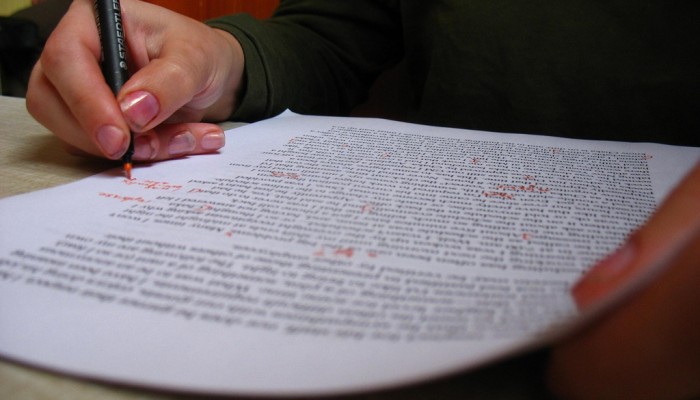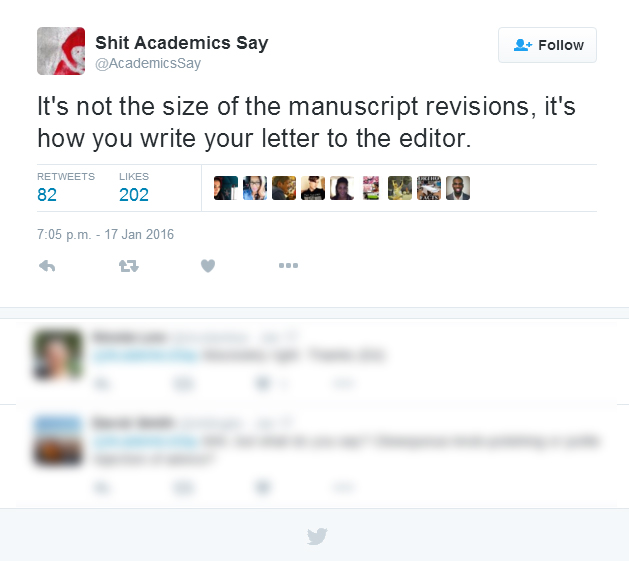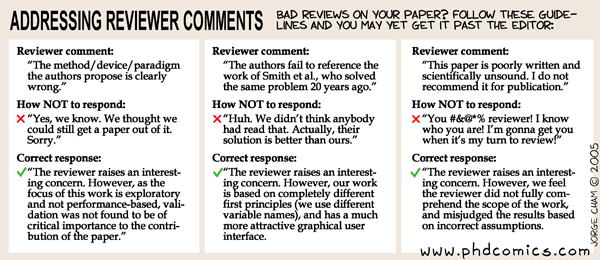
Guest writer Kathrin Spieker is back with her thoughts and experience about how to improve writing skills specifically aimed for publishing in scientific journals. This post is part of a series. Kathrin is a young seismologist who has recently started publishing her own research as part of her PhD study.
In a previous post (The publication circle) we had a closer look at the writing process, which is probably the hardest part of the whole publication circle and very time consuming. The writing might even take longer than expected, but no matter how long it takes, there will come the time of submission. This is an exciting step, whether you have submitted an article for the first time or whether you have already done so hundreds of times.
To successfully submit, there are some requirements for the text and the figures. Here are some things you should think of before submission:
-
Co-authors as pre-reviewers
In most cases, the main part of the manuscript is written by a single author, so that the text is new to the co-authors when they look over it the first time. Because the co-authors are not as emotionally connected to the text as the main author is, their feedback is like a pre-review and very valuable. It is the job of a co-author to look over the content and the language carefully! So if you get back the manuscript from your co-authors and it looks like the red ink pen exploded, then they did a great job. Maybe you are annoyed by the high number of corrections you have to make, but remember, the more you do at that stage the less the real reviewers can comment on.
-
Formatting the manuscript
Have a close look at the guidelines for authors of the journal you’re submitting to. All journals have rules for formatting the text and the figures and these rules might differ from journal to journal. High quality figures are also very important. Vector graphic figures might be a way to go, they are very powerful since the size is adjustable without losing resolution. I use for example, the free vector graphics software Inkscape. (https://inkscape.org/en/).
When formatting the text, it is advisable to have at least double line spacing, line numbers, and wide margins. The text body will look much cleaner and it is easier to read. The first impression is important, also in the review process. If the reviewers have enough space to write some comments and if the text is easy to read because of line numbers and line spacing, then the reviewers will start the review with a more happy feeling. You definitely don’t want that the reviewer is already overwhelmed by the messiness of the format before starting the reading. A happy reviewer is a nicer reviewer.
-
Writing a good cover letter
Recently, a friend of mine was a bit puzzled what to write in a cover letter. She thought is was a bit pointless to write the standard sentence consisting of the manuscript title the authors and that you submit it to that journal. Well, the plain one-liner “Dear Editor, herewith I submit the manuscript entitled “X investigation of Y” by author 1, author 2 and author 3 to your journal.” seems to be senseless. Cover letters go back to the time when manuscripts where submitted by regular post. In times of electronically submission, it might seem that you may not really need it anymore. But think about the editor that is to judge if your manuscript fits in the journal, appoint reviewers, and has the final say about the publication. How would you find it when you get a manuscript thrown in front of you without any introductory letter?

Twitter post @AcademicsSay: “It’s not the size of the manuscript revisions, it’s how your write your letter to the editor.”
The cover letter is an act of courtesy and it is a way to sell your manuscript to the editor. If you want to publish short letters, a type of express publication, or if you want to publish in high impact journals (Science, Nature, etc.), the cover letter is very important. In the cover letter you need to justify why your manuscript is important, why it needs to be published. Basically why the publication of your manuscript would be a benefit for the journal and the community.
My first advice is to make it look professional and official. Use a proper letterhead, a signature, and the university logo. Most universities have letter templates, use them! In most cases, when you submit the manuscript you don’t know yet the name of the editor, but if you do (especially when re-submitting a manuscript) address the editor by name. You should also mention the manuscript title and the author of course. But more important is a very brief explanation what your paper is about and why it is important to publish. Keep in mind that a happy editor is a nicer editor too.
Have a look at the following links, that will help you to write a good cover letter:
– https://www.aje.com/en/author-resources/articles/writing-cover-letter
– http://www.editage.com/insights/writing-an-effective-cover-letter-for-journal-submission
– http://www.editage.com/insights/dos-and-donts-for-a-great-cover-letter
Finally, your blood is pumping through your veins and your heart is beating nervously, but you do it, you press the ‘submit‘ button! All the tenseness is falling from you and you might get this special smile on your face. You’ve made it! You submitted the manuscript that was part of your life for the last months. Now, there is nothing you can do, it is all in the hands of the editor and reviewers. But you should celebrate the submission!
And then you wait… and wait… and wait. It will take one to two months before you get a decision on your paper. Sometimes it might take even longer. When you finally get a decision, it will most probably range between minor and major revision. Well, hopefully a minor revision 😉
You are excited to read the reviews and I can promise you, there will be at least one comment where you immediately think something like: #*%@&! Oh, that’s normal. The manuscript is written with all your heart and obviously your first instinct is to protect it against any criticism. Take a deep breath, read through all comments and then sleep over it. The next day you should read your manuscript again, since you probably haven’t touched it since the time it was in review. Afterwards, compare the reviewer comments with the text and you will see that most of the comments are good comments and to address them is really necessary. You might still disagree with a few reviewer comments. That’s absolutely fine, try and discuss these remarks in a scientifically and neutral tone. If you cannot properly argue against the comment, then don’t be lazy and change your manuscript as suggested.
In the rebuttal letter you should address every single reviewer comment and don’t forget to do it in a nice way – the reviewers had to put aside some of their research time to review your manuscript.
For the re-submission the same points as for the submission are necessary, but this time the cover letter and especially the rebuttal letter are of utmost importance. In the rebuttal letter you should address every single reviewer comment and don’t forget to do it in a nice way – the reviewers had to put aside some of their research time to review your manuscript. Here is some good advice on writing a rebuttal letter: http://www.editage.com/insights/how-to-write-a-great-rebuttal-letter. Remember, it is OK, if you do not agree with some of their comments, but be nice and try to be objective.
The next publication circle blog post will focus on the reviewing of articles. How does it feel like to be on the other side of the publication process? Being a reviewer helps you understand the comments of other reviewers make to you much better, it will improve your writing and help you with addressing reviewer comments.
 Kathrin Spieker is currently a PhD student in seismology at the Department of Earth Science of the University of Bergen (Norway). She investigates globally the crustal and upper mantle structure using passive seismic imaging with the focus on teleseismic converted waves. You can contact Kathrin via e-mail: Kathrin.Spieker@uib.no.
Kathrin Spieker is currently a PhD student in seismology at the Department of Earth Science of the University of Bergen (Norway). She investigates globally the crustal and upper mantle structure using passive seismic imaging with the focus on teleseismic converted waves. You can contact Kathrin via e-mail: Kathrin.Spieker@uib.no.


Pingback: Seismology | Recent activities of the Seismology Division Early Career Scientists representative(s)